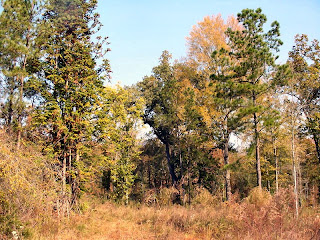
A reporter I spoke to recently told me a funeral director had said that green burial was just a "fad" and, like most fads, would fade away soon enough. Changes to American funeral traditions come slow and hard, he'd argued, citing the history of cremation, which is only now catching fire with the American public a hundred-plus years after its introduction. As evidence of green burial's limited appeal, the director said that no family he'd worked with had ever requested one.
I've heard a number of funeral directors dismiss green burial with similar arguments. But, as I told this reporter, I'm quite sure they're whistling past the graveyard. Based on my research and travels into the green burial underground that's beginning to surface in this country, I believe natural burial will not only change our funeral practices but do so even faster than many advocates had thought possible.
The demographics tilt too strongly in its favor, for one. Embracing and driving the green burial movement are the Baby Boomers. Those 78 million Americans born in the two decades following the end of World War II ushered in the first Earth Day and natural childbirth; they wrote their own wedding vows and nurtured the organic food revolution. As the leading edge of the Boomer generation now approaches retirement and begins to consider the Great Hereafter, there's every reason to believe it will bring -- and is bringing -- that same do-it-yourself, pro-environment mindset to bear on end of life issues. And unlike their parents and grandparents, Baby Boomers will be more than happy to look outside the box when death comes calling.
Green burial also makes too much sense not to appeal. While niched in the popular press as an eco phenomenon that speaks mostly to off-griders and Sierra Clubers, a natural return embraces broader, old-fashioned American values that continue to hold sway with a large swath of this country. Like thrift and simplicity, a love of family, a desire to do it yourself, a respect for tradition. Yes, green burial moves environmentalists because it's good for the planet, but failing to see its wider appeal -- as some funeral director have -- is to shortchange the movement. I'd not had that insight myself until I interviewed an 87-year-old retired meatpacker and Iowa farmer named Ed McKenna, who told me that he'd wrapped his unembalmed wife in a family quilt and buried her in a plain pine box, because it seemed "the most logical thing in the world to do." As more of us see that what constitutes "green" burial is merely "sensible" burial, a natural return will go mainstream.
As for cremation, its acceptance was slowed by many factors that don't much apply to green burial. The Holy See's glacial and begrudging approval of cremation delayed its adoption by American Catholics for the better part of a century; cremation is largely anathema to members of the Jewish faith (particularly conservatives), given their preference for burial and fresh memories of the Holocaust. Green burial, by contrast, suffers little from such prejudice.
So, while it is true that the funeral director my reporter interviewed may not have been asked to perform a green burial, I can only say: it won't be long.
The photo above shows the skyline of Seattle, Washington, site of this year's annual conference of the Funeral Consumers Alliance (June 26 - 28). This national nation profit, and its many affiliates across the country, is dedicated to helping families arrange sensible, low-cost and meaningful funerals and burials. This conference, at which I'll be speaking, offers a tremendous opportunity to learn about a range of funeral issues and strategies. Deadline for registration has been extended to tomorrow, May 31.
Mark Harris, author
Grave Matters (www.gravematters.us)


